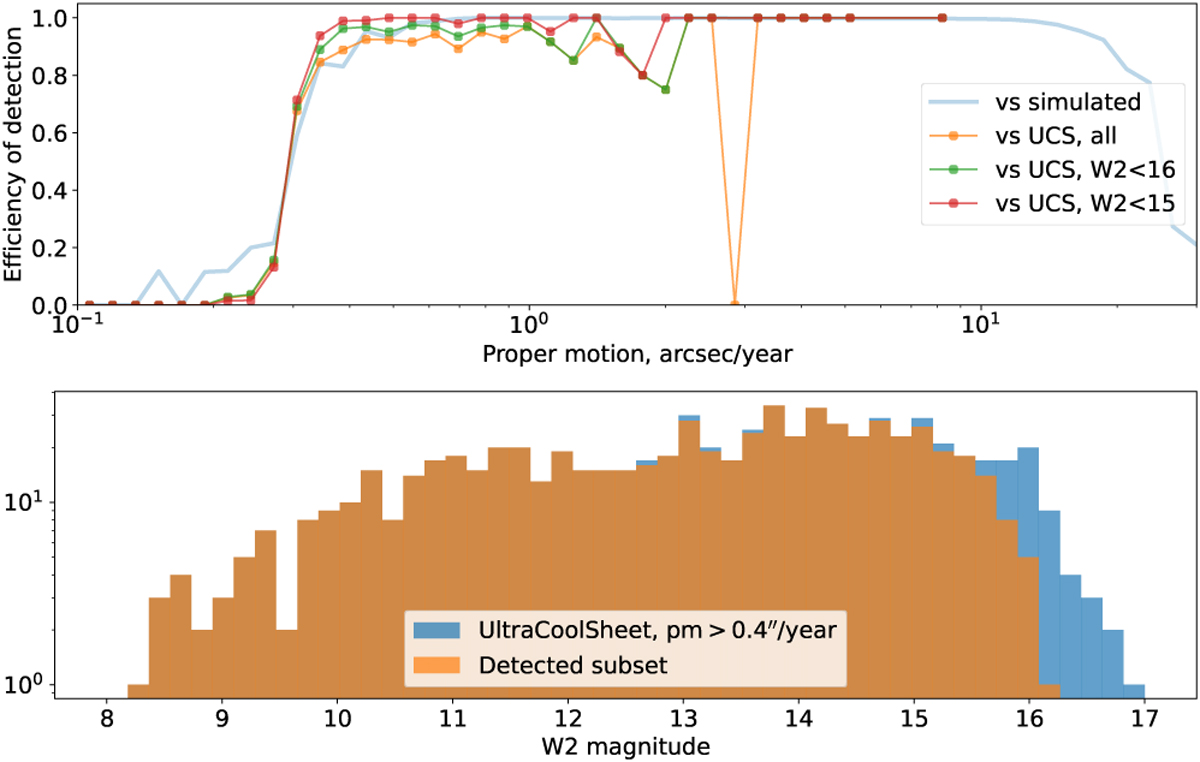Fig. 4

Download original image
Upper panel: efficiency of the moving object detection algorithm, estimated as is described in Section 2.2 by either injecting simulated entries into unTimely epoch catalogs (only detection per se is characterized), or by comparing the results with the list of known ultracool dwarfs from UltracoolSheet (Best et al. 2024a) (both detection and machine-learning-based filtering are characterized) for different brightnesses in the WISE W2 band. As was expected, the majority of objects faster than ~0.3″/year are successfully detected, with a nearly 100% efficiency for the objects brighter than W2 < 15, and an expected slight performance loss for fainter ones due to the epochal unTimely detection limit being worse than the CatWISE2020 (Marocco et al. 2021) one. The algorithm is equally efficient for the objects moving as fast as 10″/year, and still has an expected efficiency of 82% at 20″/year. Lower panel: histogram of the W2 magnitude for known UltracoolSheet objects moving faster than 0.4″/year, and its subset detected here.
Current usage metrics show cumulative count of Article Views (full-text article views including HTML views, PDF and ePub downloads, according to the available data) and Abstracts Views on Vision4Press platform.
Data correspond to usage on the plateform after 2015. The current usage metrics is available 48-96 hours after online publication and is updated daily on week days.
Initial download of the metrics may take a while.


